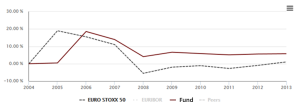Originally posted on Pulse: https://www.linkedin.com/pulse/hey-my-private-equity-can-never-die-massimiliano-saccone-cfa/
One of the likely most memorable achievements of David Rubenstein will be not about private equity, in the strict sense – it will be the rap he sang in the Carlyle’s 2014 Holiday message to investors. Musical license for musical license, he might as well have come up with a rock song to introduce his recent predictions about the evolution private equity industry. Neil Young would forgive that it is me instead to “use” the song for a few related comments.
There’s more to the picture than meets the eye.
 Let’s start from the last prediction about the name change: change capital. It is interesting that the evolution of this asset class has been marked by name changes: venture capital, leverage buyout, private equity. Over time industry leaders have been able to progressively shift the emphasis in their marketing messages to the component that best explained their business to their LPs’ audience.
Let’s start from the last prediction about the name change: change capital. It is interesting that the evolution of this asset class has been marked by name changes: venture capital, leverage buyout, private equity. Over time industry leaders have been able to progressively shift the emphasis in their marketing messages to the component that best explained their business to their LPs’ audience.
In Mr. Rubenstein’s own rap words: LPs, LPs, serve the LPs…
The prediction is probably self-fulfilling. The industry is preparing to serve, in various forms, individual investors.
I think anyway that private equity name / definition should instead be kept.
It realistically describes the industry and properly qualifies the risk-return expectations that investors should have when approaching it.
Compared to listed equity, private equity involves more complex investment structures that command a risk premium. Still, the reference to the common equity paradigm is a useful anchor for a robust asset class identity.
It does not matter that the private equity name has been associated to voracious insects during times of crisis – the same has happened to hedge funds, derivatives, certain fixed income securities when it was their “crisis turn”. These instruments have all pros and cons but they have not changed name. They all require certain care when handled but, at this evolutionary stage, they should have nothing to disguise, for example, behind a different definition – likely to be a formal change. Keeping the current name would also allow a consistent explanation of the prediction concerning the fact that returns will drift down. General equity return expectations should be lowered in times of protracted low inflation and low-interest rates.
One of my closest business partners, a long-tenured limited partner himself, often reminds me that the 8% mark of the hurdle rate refers to the 3-month Libor rate on the USD set on Jan 2nd, 1986. Different times….
With regards to the other prediction regarding the more standard definition of internal rate of return, well, only sticking to the IRR the industry can deal with the 8% hurdle – but I hope it will move to metrics that will truly help investors understand and “predict” the dynamics of the assets they have invested in. A better performance and valuation metric is a prerequisite for the industry to deal with the further predictions of increased regulatory scrutiny and greater secondary liquidity. And it should be consistent with the terms of all other asset classes to insure proper comparability.
A rate of return that shows unambiguously how private equity co-moves with the macro environment and the listed equity markets, whilst delivering its premium.
This is listed market beta plus premium – expressed in annualised rates of return (since inception). Private equity funds behave like this.
Ultimately, transparency can be achieved providing clearer valuation references, cross-asset performance comparables, easier to interpret and evaluate – without giving away insider information, similarly to what happens for the listed markets.
Public equity is the (valuation) bedrock of private equity.
